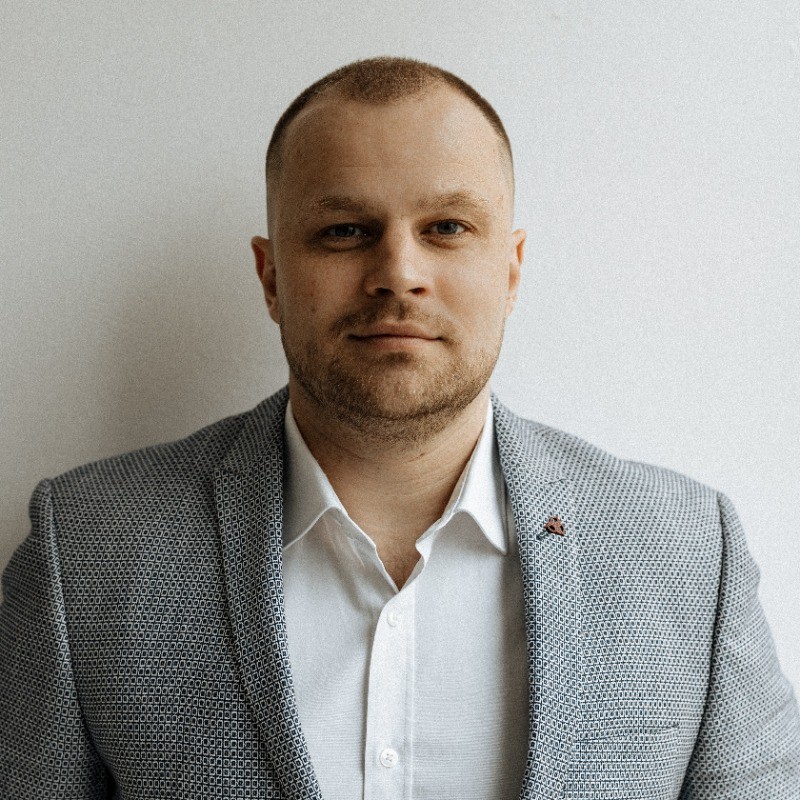Table of content
In this article, we’ve collected the most popular coding languages and arranged them according to the TIOBE index.
The TIOBE Programming Community index is an indicator that evaluates the popularity of programming languages. The rating is based on a count of the search query results that include the name of the language. The number of skilled talents, courses, and third-party vendors also play a crucial role for the listing. The rating gets regular monthly updates.
However, the TIOBE index does not suggest the best programming languages or the most used programming language.
Therefore, we recommend using this index as evidence of your programming validity or as a basis for identifying the next tech stack.
The Top 20 Fundamental Coding Languages
Just like any other industry, the IT ecosystem is based on tech pillars. Within technological terms, these pillars take the form of basic computing languages.
What is a programming language? Well, it’s a set of strings that translates the 1s and 0s into something you can read on-screen.
Thus, we have at least 20 common programming languages that rule the roost today. Let’s rank these programming languages by popularity.
C
The C programming language is number one on the list. But it’s hardly surprising. It has been on top since 1985, with occasional seconds due to the popularity of Java.
Today, C is among the most popular programming languages mainly because it powers IoT applications. Thus, an increasing number of smart devices run on C-powered software. Connected devices need high performance, and that is exactly what the C language provides.
Python
Next on our programming languages list is the omnipresent Python. Its place on the rating is justified since Python is touted as the easiest programming language for beginners. This coding language demonstrates a 2.17% rise over its previous positions, which contrasts with a decline for Java over the same period.
Overall, Python has been steadily rising in popularity since 2004.
Java
For the first time in history, Java is not among the top two programming languages. Although Java was leading the TIOBE ranking back in January 2020, its position later collapsed to %11,68. In August 2021 it had the lowest position since 2001, being the third on the list.
Today, Java is still dropping in popularity but retains a stronghold among the top programming languages. It has a huge fan following and versatile application areas – from Android applications to the backend software. Besides, Java is the building block for other programming languages, so its knowledge is crucial.
C++
In 2003, C++ was awarded the language of the year. In 2021, it’s the fourth among computer languages and is demonstrating a steady positive growth pattern through the year.
We can’t deny that there is also an obvious element of legacy usage underpinning the resilient relevance of C++. However, its bright prospects can also be owed to the gaming industry, microcontrollers, and IoT. Besides, C++ is practically a coding standard and is often taught as a first programming language.
C#
The TIOBE Index also reveals that C# is the fifth on the programming languages rank. Its popularity was at its highest in 2012 and has been slowly declining since then.
Yet, C# manages to hold its leading position by a small margin. In general, this programming language dominates much of today’s greenfields, including web and mobile apps, game development, business applications, and more
Virtual Basic
The high rating of Virtual Basic is probably the biggest surprise. For starters, it was first released 29 years ago and retired by Microsoft, losing support, in 2008. Yet there it is, at No. 20 in the 2020 TIOBE Index.
Also, its sudden rising surprised Tiobe analysts in 2019 when it climbed to the fifth. Anyway, Visual Basic is predicted to sink into oblivion sooner or later. In 2020, it enjoys its limelight with dedicated office applications in small and medium enterprises.
JavaScript
There are over 1.8 billion websites in the world, and JavaScript is used on %97.6 of them. So it’s no wonder it’s among the most popular programming languages in the world. Since the nineties, JS has gained a lot of followers and is used to power Angular.js and Node.js.
Its popularity was volatile over the years, with constant back and forth between the #6 and #12 positions.
PHP
Developers have predicted the imminent demise of PHP since 2014. Yet, it pertains as a staple scripting language with A-list companies like Lyft and Slack using it. PHP hit its lowest in 2017, ranking 10th among coding languages. Since then, it’s had a stronger foothold, yet its peak of popularity seems to be behind.
Nevertheless, it remains one of the most popular programming languages due to a gentle learning curve and the age of its codebase.
Assembly Language
Assembly Language is another surprisingly sought-after coding language. This low-level technology is back in vogue today spurred by the Internet of Things.
According to the July 2016 report, it has cracked the top ten, after an absence of undetermined length. And it doesn’t seem to sink into oblivion any time soon.
SQL
SQL comes next, being touted as the most popular technology among data scientists and data engineers. It stays firmly on its feet over the stretch of 2004 till 2018. And it wasn’t up until 2018 when SQL demand slightly decreased.
Nevertheless, it’s a staple in the data world, hence profound knowledge of SQL will become a valuable asset in the coming years.
Groovy
This guy is an object-oriented language based on the Java platform. Groovy 1.0 was born on January 2, 2007, and since then it continues its march toward the top 10. In August 2020, Groovy was placed 18th, which is quite a huge lap compared with the current rating. It’s a great alternative to Java that boasts Python, Ruby, and Smalltalk capabilities.
Classic Visual Basic
Classic Visual Basic was created as a project to sustain Visual Basic 6 and as a fork compatible with current operating MS systems. It is still the most common coding language in industry and educational institutions.
Therefore, its existence is safe from technological disruptions. Since last year, it managed to gain 5 positions higher and continues its growth with a 0,41 added percentage.
Fortran
Fortran is suddenly back on the list of most popular programming languages. Just a year ago, this dinosaur was placed in the top 50, but its popularity keeps growing. Fortran is still unrivaled in structural programming, but it has features that mainstream C-like languages are lacking.
Also, Fortran is widely used primarily for scientific and engineering calculations. One of the advantages of modern Fortran is a large number of programs and subroutines written in it.
R
R is one of the computer programming languages used in the world of data science. However, it has abandoned its stand compared with last year’s rating. In 2020, its popularity was recognized as the 8th among all.
Today, R crashed out of the top 10 for the first time in years. Tiobe deems it a victim of consolidation in statistical programming, with more engineers opting for Python.
However, R benefited from global efforts to find a vaccine for the COVID-19 virus. Hence, it is now essential for statistical analysis, which makes it one of the best picks for a future career.
Ruby
Ruby is a well-known programming language, especially popular among startups. Such high flyers as Airbnb, Twitch, and GitHub were powered by Ruby. Its demand is bolstered on Ruby on Rails, which is a full-stack web application framework that fuels Ruby.
Ruby’s dominance has remained at the same level over the last few years and is not projected to fall.
Swift
In the realm of the iOS world, Swift is marketed as a go-to technology for app development. This programming language has knocked out Objective-C and sits comfortably in the top 20 in 2021.
Although Swift is on its way down, losing 4 positions since last year, its ranking reflects Apple’s salient move toward a use-anywhere approach.
Matlab
Lots of engineers worldwide rely on MATLAB for a range of applications. Its application area spans both industry and academia, including deep learning and machine learning, control systems, computational biology, and others.
It is not on speed dial when it comes to data science. However, budding data scientists use it as a starting point in the field.
Throughout the years, it’s had highs and lows, scoring the 10th in 2017. Today, it remains the staple programming language dedicated to mathematical and technical computing.
Go
Golang is a relatively new kid on the block. It was released in 2009 as a programming language for large systems created by Google. Go has come a long way since then and managed to climb from the 122 in 2015 to the language of the year in 2016.
Currently, TIOBE places Golang in the top 20 with rock-star enterprises using it in their tech stacks.
Prolog
This mammoth was one of the first logic programming languages back in the 70-s. Currently, it’s known as one of the most common AI coding languages. Perhaps, the demand driving Artificial Intelligence has also secured the rise of Prolog.
In 2020, it was at the bottom of the list. In 2021, it made a surprising comeback, hopping from 36th to 19th place.
Perl
Perl is both the most dreaded and well-compensated language, according to Indeed.
However, experts predict its slow decline and near-replacement by Python. TIOBE demonstrates that it has been losing its stronghold since 2006, but is still widely used for maintaining both modern and legacy applications.
Staple, Promising, and Industry-specific Languages
SAS
SAS is in the -pre-leading 21st place, which is a great result for a data language. Initially, it was a basic set of template queries for grouping data.
But over time, SAS has become full-fledged and quite a popular programming language. Although it never reached heights in the coding languages list, SAS demonstrates steady demand over the years.
Delphi/Object Pascal
Object Pascal has been in the top 20 since the advent of the TIOBE index. In the early 2000s, it was one of the most demanded languages and IDEs. However, because of its tumultuous history, its popularity fell down. In any case, a powerful and fast compiler, as well as a large runtime library (RTL), will secure Pascal and Object Delphi in the TIOBE index for a long time to come.
Objective-C
Objective-C is now teased as the loser superseded by Apple’s Swift for iOS and macOS app development. Back in the day, it was one of the most used programming languages for Apple devices.
Today, it has dropped off the top 20 most popular languages. It was third on the index in 2014 when Swift arrived.
Rust
Rust is a programming language developed by Mozilla for better performance and security. Its scope of application is quite wide – from client applications to blockchain projects.
Rust is the youngest and closest rival of C++, which aims to solve the known shortcomings of C++ and other languages. Probably, this is the reason behind its skyrocketing demand. Thus, Rust has made it from the bottom of the TIOBE index in 2012 to the top 30 in 2021.
Scratch
In 2021, Scratch claws its way up into the top 30 list of programming languages. Essentially, it is an introductory programming language with a purely graphical interface. Scratch is taught and used at schools and colleges as a tool to make programming simple and intuitive.
It had a sudden spike in popularity in 2017. Since then, it shuffled around, losing and gaining small percentages, but holding high rankings in the TIOBE index. Thus, community statistics on Scratch’s official website include over 83 million projects shared by over 75 million users.
Julia
Launched in 2012, Julia is a young programming language designed mainly for technical computing. It is a high-level programming language with high performance that merges the interactivity and syntax of ‘scripting’ languages with the speed of ‘compiled’ languages.
The rising prevalence of Julia shows no sign of retarding according to data from Julialang.org. In 2021, the number of downloads jumped significantly to over 29 million downloads as of July with around 11.8 million lines of code.
In the most recent TIOBE index, Julia jumped from the top 50 to the top 30. And according to the TIOBE CEO Paul Jansen Julia is the main candidate to break into the top 20 next year.
Ada
Ada or Augusta Ada Lovelace is one of the greybeard coding languages. Experts predict the inevitable end for it since the most recent version of the language standard is Ada 2012.
However, its use is bolstered by safety-critical applications such as military solutions. Hence, it’ll still be lingering for the years to come. Ada is showing positive dynamics since 2020, climbing from the 43rd position to the top 30.
Lisp
Lisp is another long-lived programming language in the niche of high-level systems. Once a symbolic computing language, it has been overhauled to meet the new needs of AI-powered technologies.
After slumping in the 1990s, Lisp has enjoyed a revival of interest after 2004. On the TIOBE index, Lisp floated between #13 and #44, landing in the top 30 in 2021. Recent activity has targeted use cases of Common Lisp, Scheme, Emacs Lisp, Clojure, and Racket, and is linked to building new portable libraries and applications.
Dart
Dart is a general-purpose programming language from Google. It is designed primarily for developing web applications (both client-side and server-side) and mobile applications. The still young language is touted to be an easy-to-use alternative to JavaScript that addresses some of the drawbacks of the seasoned language of the web.
In the Tiobe index of the most popular coding languages in 2021, Dart is in the top 30. We can witness its rapid adoption in 2014 and since then its rating is gaining momentum. Also, the Dart-fueled UI toolkit Flutter for platform-agnostic development of user interfaces experienced a significant contributor boost in 2021.
PL/SQL
Developed by Oracle Corporation, PL/SQL is a combination of SQL along with the procedural features of coding languages. The PL/SQL language is Oracle’s own extension of the SQL language and offers the functionality of a serious programming language.
PL/SQL debuted on the TIOBE index in 2004. It has come a long way since then – a huge cleft from position 67 to 7 in 2005 – which is not bad for a database stored procedural language.
Today, it closes the top 30 and still maintains its presence to instruct the compiler ‘what to do’ through SQL.
(Visual) FoxPro
FoxPro is a data-centric procedural language, which has resurfaced as object-oriented. This coding language is tightly integrated with its own relational database engine. Its end of life was announced by Microsoft back in 2008, with a support end date in 2015.
Surprisingly enough, FoxPro doesn’t seem to leave the rating. It is now used for developing data-centric desktop applications with its own internal database. Also, Visual FoxPro 9.0 is still the ultimate RAD database development tool.
Scala
Next on TIOBE’s list of programming languages is the ecosystem of Scala. The Scala coding language is a symbiosis of Java and C#. It is considered one of the leading web systems which leads to a swell in demand for Scala developers.
According to Stack Overflow, it is one of the most loved programming languages with the second-highest remuneration among all. Since 2005, Scala has been gaining traction to land in the top 20 in 2018. As of today, it’s holding a decent position in the tech world, so you can bet on it in 2021 and beyond.
ABAP
ABAP or Advanced Business Application Programming is an internal high-level programming language that runs in the SAP environment. If you’re looking to work in big enterprises, ABAP is a great option for running business systems like ERP software. However, you won’t have much space outside the SAP world.
The TIOBE index placed ABAP in the top 15 of most popular languages back in 2015. Today, it’s lost its momentum, but still remains a fundamental skill in the business infrastructure.
COBOL
Being a counterpart of ABAP, COBOL is getting close to the competitor (surprisingly). COBOL is coming back from the dead mainly because of the pandemic.
Thus, IBM contributed to the rebirth by offering a tutorial on long-gone COBOL. This initiative is due, among other things, to the collapse of the American employment system. The system relies on the COBOL software and is no longer able to handle a sharp increase in applications for unemployment benefits.
The software needs an urgent upgrade, but there are few COBOL experts left in the world. Hence, it’s a nice opportunity to fill a highly specialized position.
Logo
Next goes another programming mammoth. Just like Scratch, the Logo language is mainly used for educational purposes. Being a simplified LISP dialect, it allows you to control devices and introduce students to the tech world.
Logo has a low threshold and no ceiling and also assists seasoned coders to perform complex explorations and build advanced projects.
F#
This guy is considered to be the most underrated coding language among developers. Like a dark horse, it’s been lingering behind C#, not gaining enough acknowledgement. However, if we look at the major C# language features, they’re all distant implementations of core F# features.
Throughout its history, FSharp has never hit higher than the top 20 but hasn’t disappeared from the rating either. And with the support of Microsoft, it’s a surefire technology to have in your stack.
Kotlin
What do TikTok, Instagram, and Microsoft OneDrive have in common? They all leverage Kotlin. Since 2016, Kotlin has joined the team of most common programming languages for Android development.
Today, it continues on the up, hitting the top 40 and being an official programming language for Android app development in Google.
Besides, Kotlin is applied in IoT applications, game development, and data analytics. All these spheres are the main areas of focus in 2021 and beyond.
Transact-SQL
In 2013, TIOBE named Transact-SQL the main programming language of the year. Since then, this coding language didn’t have big gains in the index, gradually landing in the middle of the list.
However, it still stays relevant, since Transact-SQL is a key piece of Microsoft SQL Server. The latter secured its title as the common data platform with more than %50 followers.
Lua
Lua is the most common coding language for gaming and web services. In 2011, Lua entered the top 10 for the first time in history. However, its popularity flat-lined over the years due to the rise of Python, Perl, and Ruby.
Today, Lua is still performing great as a pretty popular scripting language due to its short learning curve and ease of use.
Scheme
Scheme closes the top 40 in the list of programming languages. It’s a minimalist dialect of the Lisp family of coding languages. Scheme is one of those good old technologies that panned out back in 2004.
Since then, its demand has been gradually declining up till the 68th position in 2017. Scheme is now mainly used for teaching essential ideas of programming languages. And although it is actually aimed for all purposes, you’ll hardly see it outside the university.
Ladder Logic
If we’re talking about niche languages, Ladder Logic is probably the niche-est of them all. Initially, it was used to document the design of relay racks. These days, it is an easy-to-use, graphical coding language in manufacturing and process control.
Ladder Logic cannot be considered the most popular programming language. However, it fuels programmable logic controllers (PLCs) used in industrial control applications.
VBScript
Once a scripting language to beat JavaScript, VBScript is now slowly dying.
And Microsoft has a direct bearing on the fall of this programming language. In August 2019, Microsoft disabled VBScript by default on all supported versions of Windows.
Therefore, VBScript is now left to a gradual decline. However, we can still see some remnants of its might on some older internal business sites that use VBScript instead of JavaScript.
D
D is a compiled and statically typed language with a C-like syntax. It is positioned as a modern language for system programming. According to TIOBE, D’s highest-ever ranking was the 12th place with 1.809% in Mar 2009. Since then, it hasn’t had an upward trajectory.
However, there is no solid reason behind its low traction compared to the big languages. Most probably, D just doesn’t have big marketers as A-list languages have. Apart from that, it’s a great general-purpose coding language that awaits its limelight.
Clojure
Clojure is a general-purpose Lisp language designed for the Java Virtual Machine.
Despite its young age, quite a few famous companies benefit from this technology. In particular, FlightCaster uses Clojure for processing large amounts of data, solving Machine Learning problems in a distributed environment.
Since 2007, Clojure has had a turbulent history with ups and downs. The JVM Ecosystem Report 2018 ranked Clojure as the 2nd most used programming language on the JVM for “main applications”. But since then, it has dropped in popularity, mainly because it’s better suitable for greenfield projects.
LabVIEW
Laboratory Virtual Instrument Engineering Workbench is a development environment and platform for running programs created in National Instruments’ graphical programming language G. It is a one-of-its-kind technology that provides a graphical representation of all the elements.
This coding language is used by millions of engineers and scientists to build sophisticated testing, measurement, and control applications. Since 2014, we can witness a positive growth of LabVIEW despite its industry-specific nature.
Nim
This coding language is a dark horse on the current rating. Back in 2017, Nim debuted among outsiders in the TIOBE index. Today, it’s slowly crawling up bridging the gap of more than 100 positions. With the Python feel but native compilation, we are sure we’ll hear more of Nim in the coming years,
VHDL
This coding language was developed in 1983 by the Pentagon. Its main purpose was to describe logic circuits for all stages of electronic systems development. Today, VHDL is a general-purpose digital design language for specific use.
Although VHDL has no chance of beating the leaders, it’s a perfect option for programmable logic. The latest version was released in 2008, so it’s far from dead.
Apex
While we’re on the note of niche technologies, let’s talk about Apex. It is a Java-like language that automates backend logic in applications on the Salesforce.com platform. Therefore, Apex is the most common programming language among Salesforce developers and administrators.
The popularity of this language escalates in tandem with the growing use of Salesforce. So as long as this SaaS solution is operating, Apex is safe from the fall.
TypeScript
In 2018, Typescript finally joined the TIOBE list of top 100 programming languages. Today, it’s the obvious choice for a wide range of software projects, which further keeps its hype.
Many software developers enjoy TypeScript thanks to its generics and static typing. It also supports a great number of IDEs and can be converted into JavaScript at any time.
Bash
Bash is another mammoth among programming languages that is aimed for Unix/Linux shell scripts. Launched in the late 80-es, Bash still holds the line in 2021. Its long history can be attributed to the fact that Bash came as the default shell on most Linux distributions. From 2020, we can see an upward trend on the TIOBE list.
Final words
Times are changing. And technologies never stay the same. In 2021, the number of coding languages has surpassed the three-digit mark. With such a variety of technologies out there, it’s challenging to choose the surefire option for the years to come.
However, there are a few staple programming languages that grab the headlines each year. The TIOBE index demonstrates that the mighty C, Python, and Java always stay on top with minor shuffles.
C++ and C# also consolidate their leadership positions in related areas. If you feel like riding the dark horse, consider learning rising languages like Nim and D.















